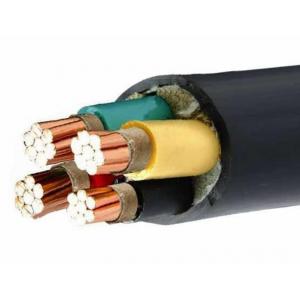
Add to Cart
Low-smoke halogen-free 4×35mm2 fire-resistant cable
| No.cores x | Insulation | Nominal | Outer Ø | weight | Current ratings in air 30℃ | Current ratings buried 20℃ | maximum DC resistance at 20℃ |
| cross-sec. | thickness | Sheath | approx. | approx. | |||
| thickness | |||||||
| mm² | mm | mm | mm | kg / km | A | A | Ω/km |
| 4×4 | 1 | 1.8 | 14.9 | 339 | 30 | 38 | 4.61 |
| 4×6 | 1 | 1.8 | 16.1 | 436 | 38 | 48 | 3.08 |
| 4×10 | 1 | 1.8 | 19.3 | 669 | 53 | 66 | 1.83 |
| 4×16 | 1 | 1.8 | 21.8 | 953 | 70 | 86 | 1.15 |
| 4×25 | 1.2 | 1.8 | 26 | 1374 | 94 | 112 | 0.73 |
| 4×35 | 1.2 | 1.8 | 28.7 | 1810 | 116 | 135 | 0.52 |
| 4×50 | 1.4 | 1.9 | 29.5 | 2312 | 139 | 161 | 0.39 |
Fire-resistant and flame-retardant cables
There are important differences between fire-resistant cables and flame-retardant cables, even though they have undergone various fire resistance tests to obtain their respective classifications. In short, the design of flame-retardant cables prevents the fire from spreading to new areas. Fire-resistant or fire-resistant cables are designed to maintain circuit integrity and continue to work for a specified time under specified conditions. The distinction between the two is crucial when it comes to maintaining life safety or when critical circuits needed for the plant to be shut down safely immediately.